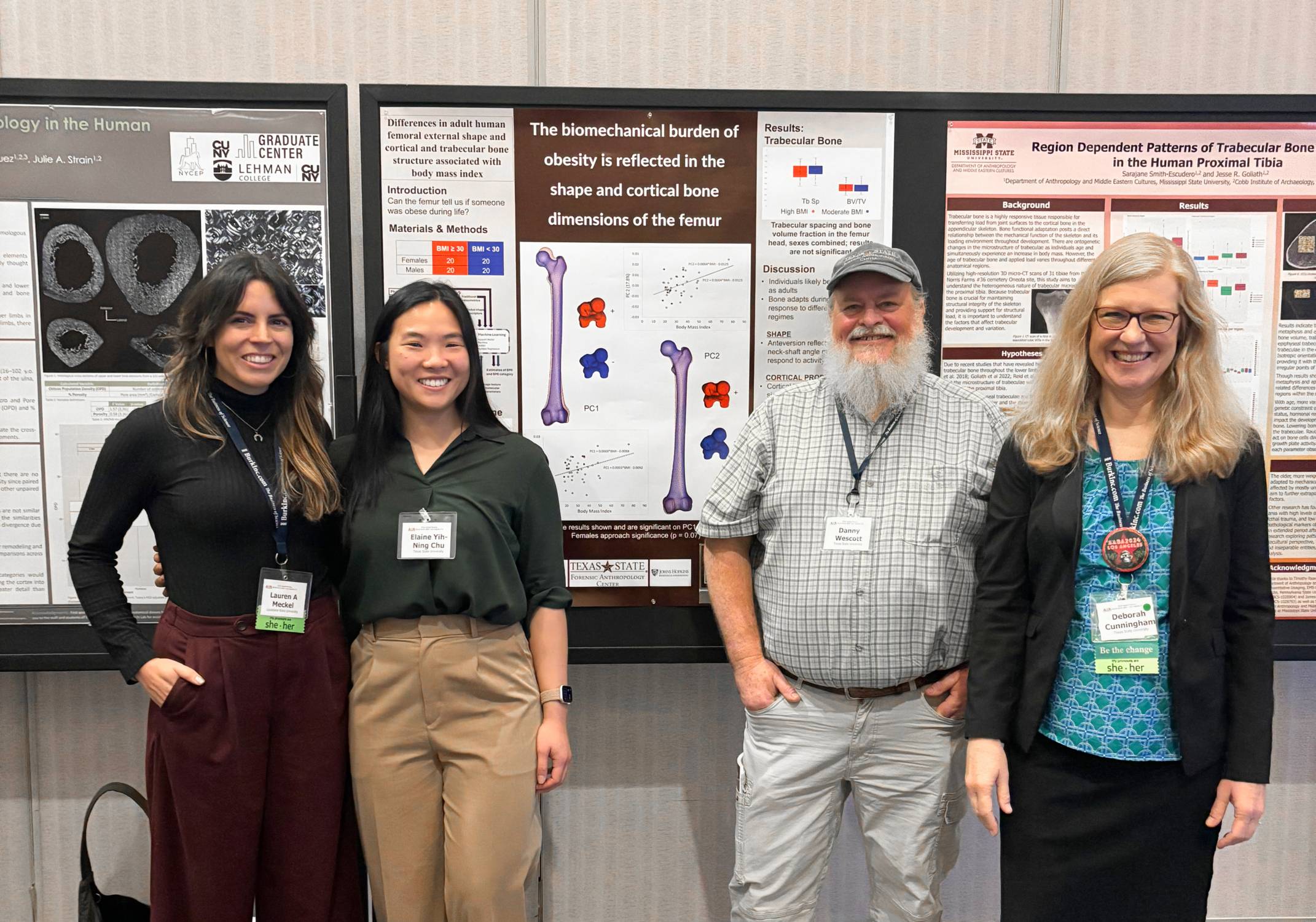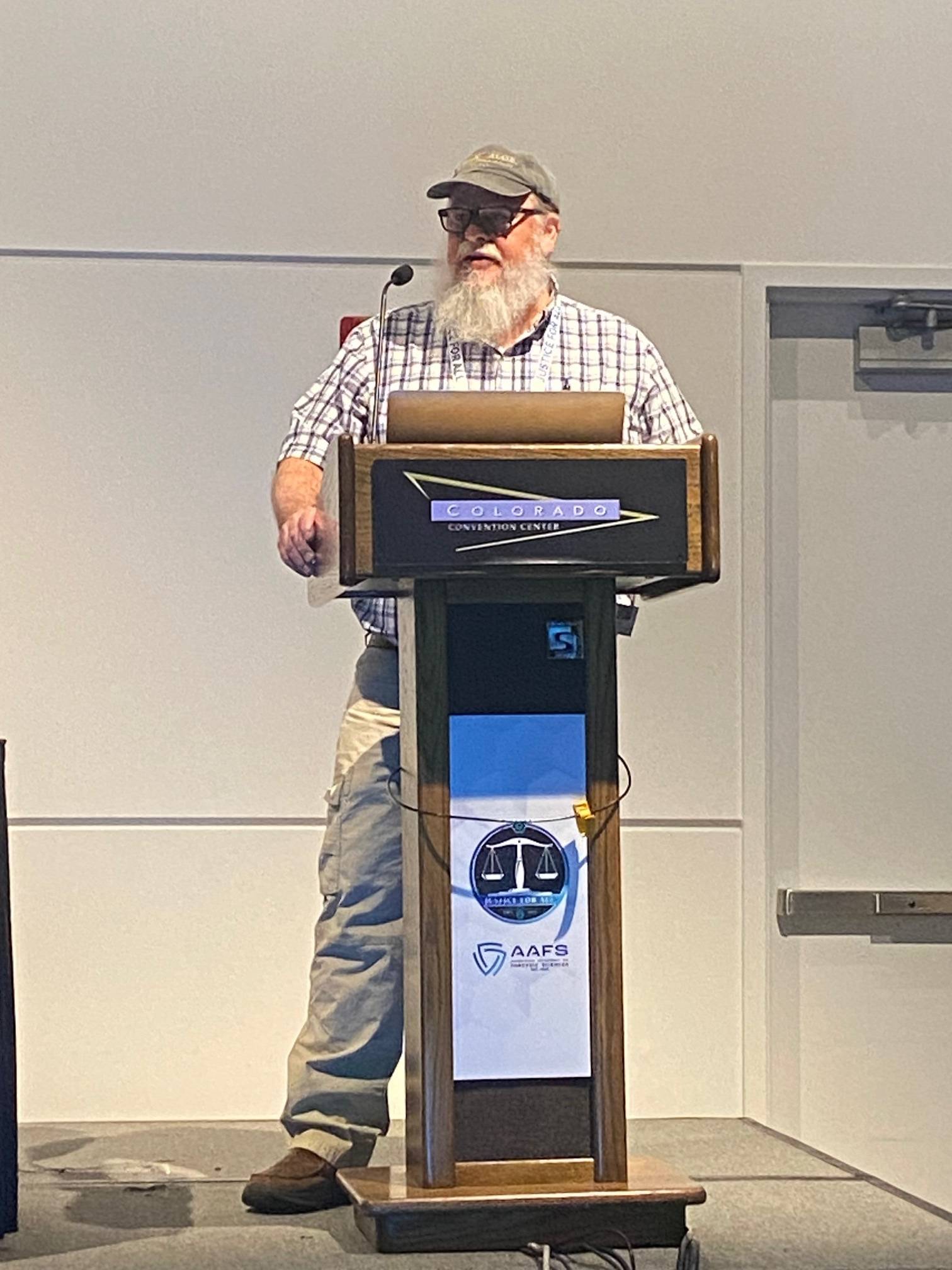Jeremy Thomas | April 25, 2024

Texas State Anthropology researchers are using grants from the National Science Foundation and the National Institute of Justice to examine the relationship between body mass index (BMI) and bone structure.
Their research could have medical and forensic implications, including helping investigators identify human remains more easily.
The team of researchers includes Danny Wescott, Deborah Cunningham, Elaine Chu, and Lauren Meckel from Texas State along with colleagues from Johns Hopkins University.

Their latest study examined 80 femur bone samples (40 male and 40 female) curated by TXST’s Donated Skeletal Collection. The samples were analyzed using X-ray imaging technology to examine their shape and structure. Results showed that BMI had a significant impact on the femur bones of males, but not for females.
Danny Wescott, Ph.D., Director of the Forensic Anthropology Center at Texas State, says that their latest research findings have potential for helping identify human remains.
“Forensic anthropologists build biological profiles by estimating age, sex, and ancestry to help narrow down who you’re looking for,” says Wescott.
“We’ve been able to roughly estimate if a person is obese by simply looking at skeletal remains, but we haven’t really had a way to quantify and measure it until now.”
The team has published their results in multiple journals and presented their latest research at several conferences this year including the American Association of Forensic Sciences conference in Denver in February and at the American Association of Biological Anthropologists meeting in Los Angeles in March.
Though their latest study focused solely on femur bone samples, Deborah Cunningham, Ph.D., faculty member in Anthropology, says that the team is continuing to explore the relationship between BMI and bone morphology by examining other bones in addition to the femur.
“These two large grants we received are helping us bring in money to the Liberal Arts program which is helping get both undergraduate and graduate students involved in research efforts,” said Cunningham.
“We’re really excited to continue to try and figure this puzzle out.”
The Forensic Anthropology Center at Texas State (FACTS) works to advance forensic science through education, collaborative research, and training. More information can be found on the FACTS website.
Share this article
For more information, contact University Communications:Jayme Blaschke, 512-245-2555 Sandy Pantlik, 512-245-2922 |
